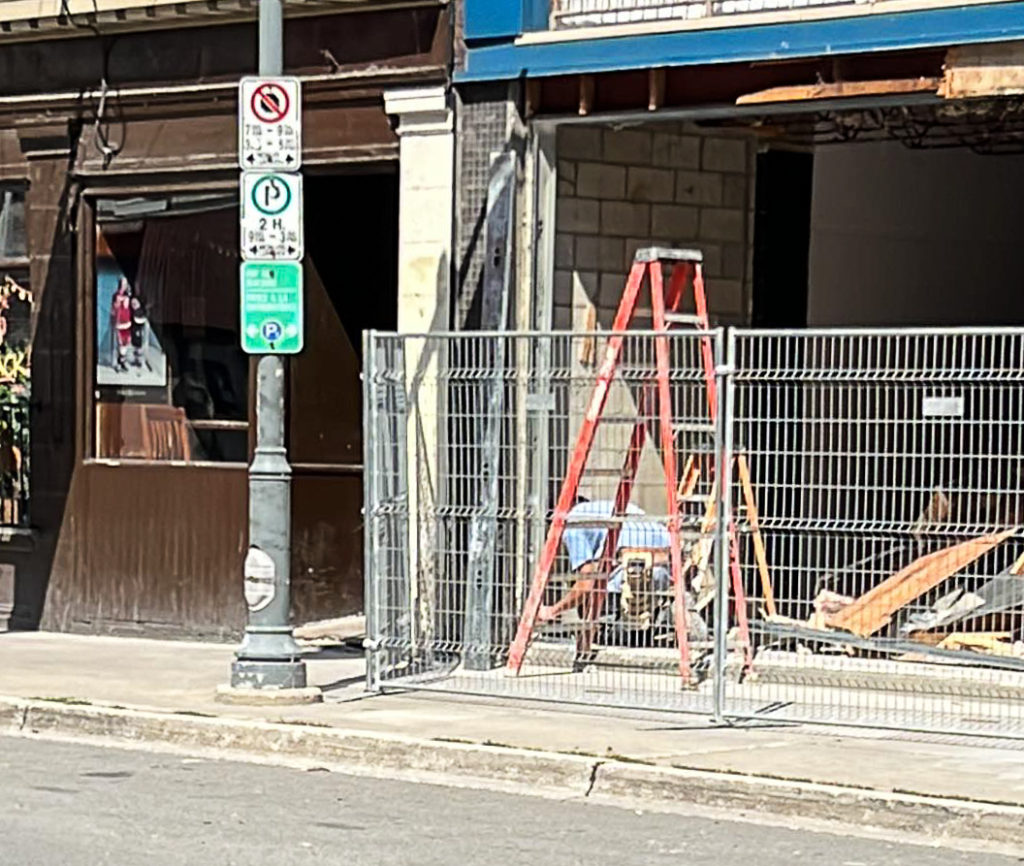
Ryan Lythall
In Ottawa, there are five seasons: fall, winter, spring, summer – and construction.
Traffic gets backed up, causing delays and frustration; bus routes are detoured causing confusing; and then there’s sidewalk construction!
Sidewalk construction causes a different set of problems. Sidewalks and bike lanes are blocked off, construction signage takes up space on sidewalks and all of this causes problems for pedestrians, cyclists, small businesses and, most especially, people with disabilities (PWD).
I find that most sidewalks in Centretown are way too small as it is. As soon as construction signs or pylons are put in place, they become a barrier to any PWD using a mobility device. And, sometimes, there aren’t any construction signs to indicate closed sidewalks or construction sites.
This happened to me recently. I was rolling along Bank Street in front of Barrymore’s and Babylon, and I hit a roadblock. A fence in front of a store was being renovated and it created a literal roadblock in the middle of the sidewalk. I had to turn around and cross the street. What if I was visually impaired, or the other sidewalk was closed, or without a low curb?
I didn’t see any signs indicating that this particular section of the Bank Street sidewalk was blocked off or not accessible to PWD. I say PWD because there was still enough room for able-bodied people to walk around it. So two questions come to mind: Why weren’t there any signs indicating a construction zone? Why was it set up so that only able-bodied people could get by?
The city recently issued a press release to remind residents that each year between April and October the city performs assessments to ensure that construction sites are accessible for everyone. It states:
“The City’s construction contracts include accessibility requirements for construction sites per the Accessibility Design Standards. Every year, the City assesses many construction sites as an essential tool to verify that requirements are met and the sites always remain accessible for residents.”
In reading the press release, I learned that there are opportunities for community volunteers to go along with professional engineers who do site assessments. They are usually selected “based on their experience” and the assessment takes two hours with hard hats and vests provided.
According to the release, the assessment includes walking through the construction site to look at “accessibility features”, the “type of material underfoot” and fencing that is in place. A report is prepared and shared with the construction site staff so they can make improvements.
I admit that I wasn’t aware of the accessibility assessment team. I’m glad they exist and that PWD are being considered. But clearly more needs to be done.
For starters, the City Of Ottawa should be making more of an effort to inform the community about their efforts and how the public (including PWD) can get involved in ensuring that construction season doesn’t put up more barriers for anyone who uses the sidewalks, most especially PWD.
Ottawa really needs to ramp up doing what it takes to make Ottawa truly accessible for all.
Follow Ryan on Twitter: @rolling_enigma
